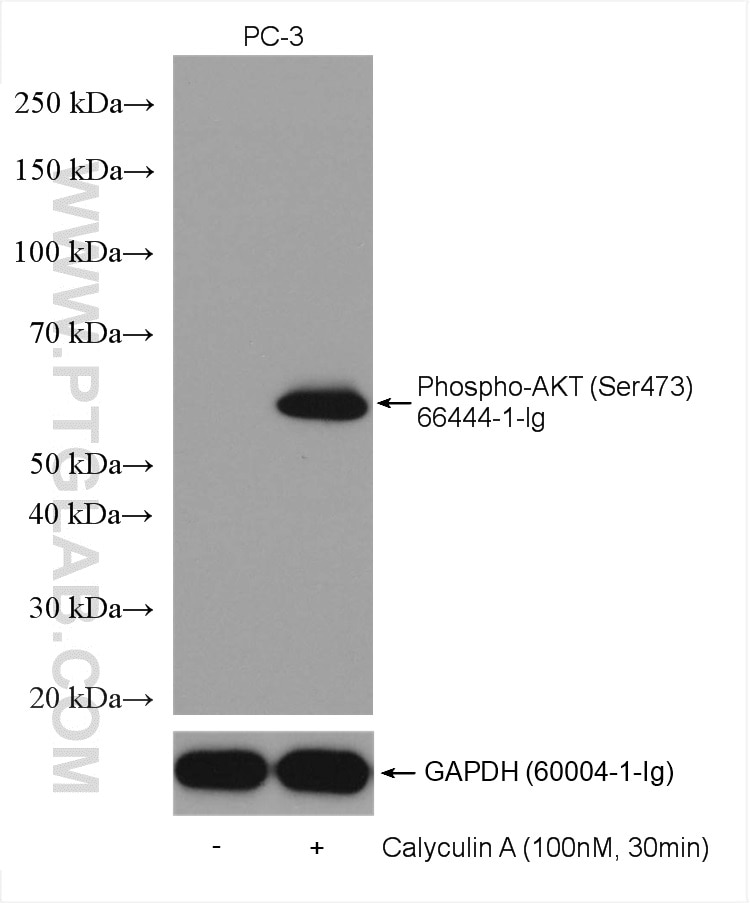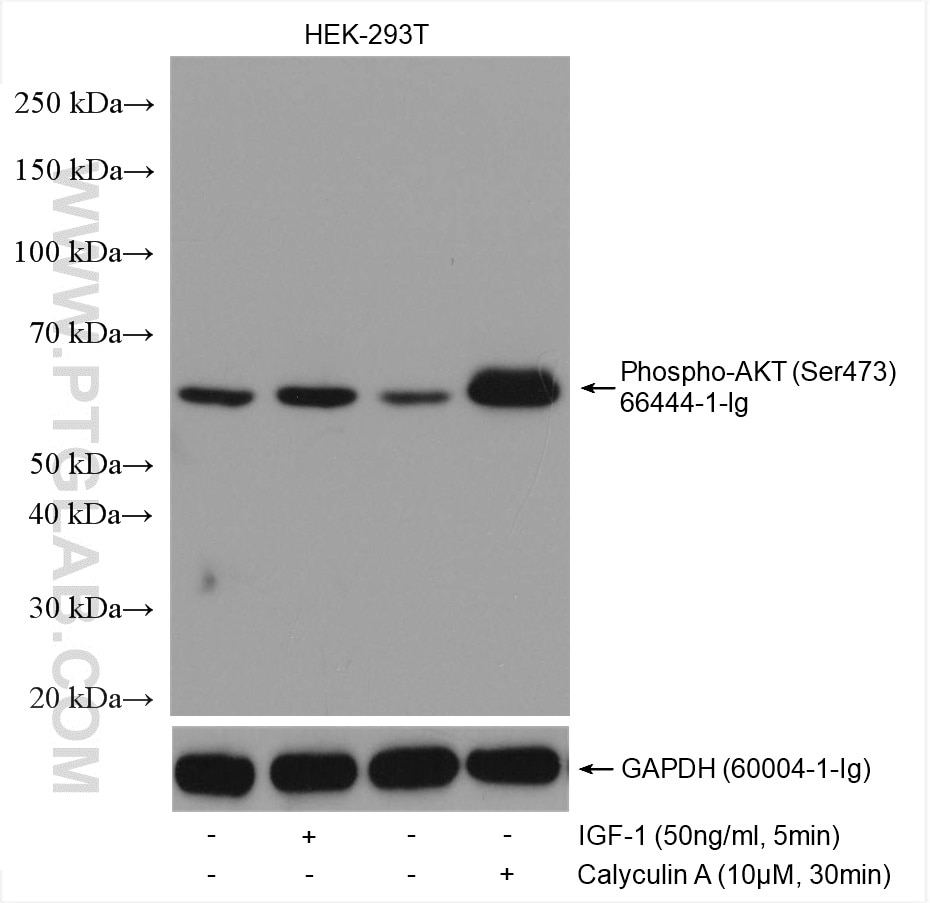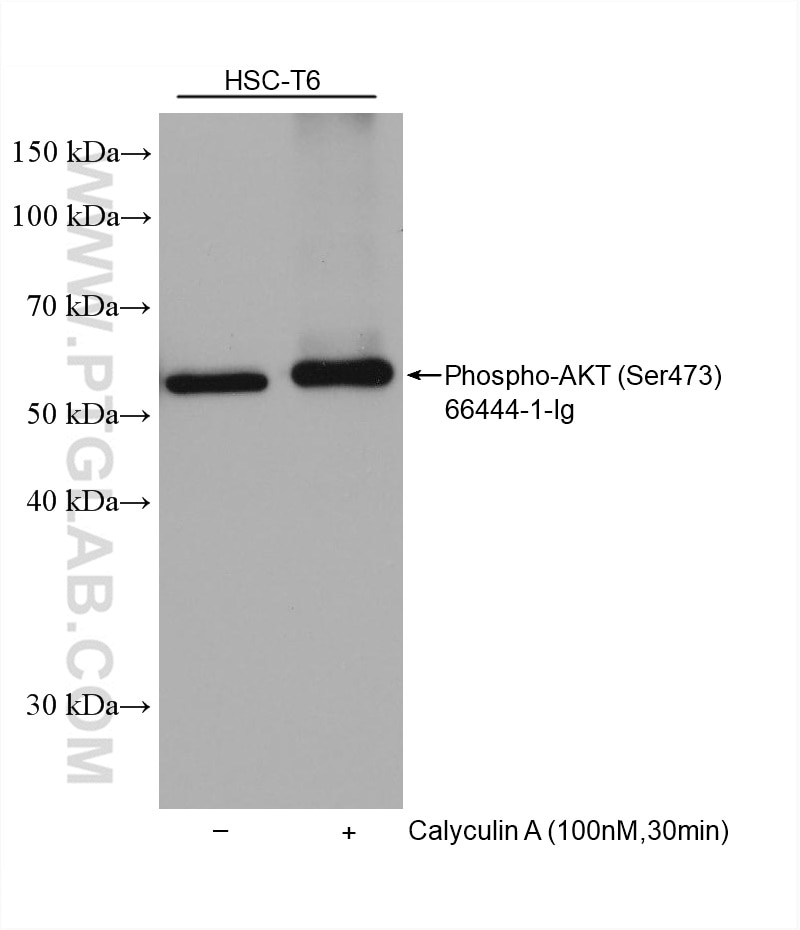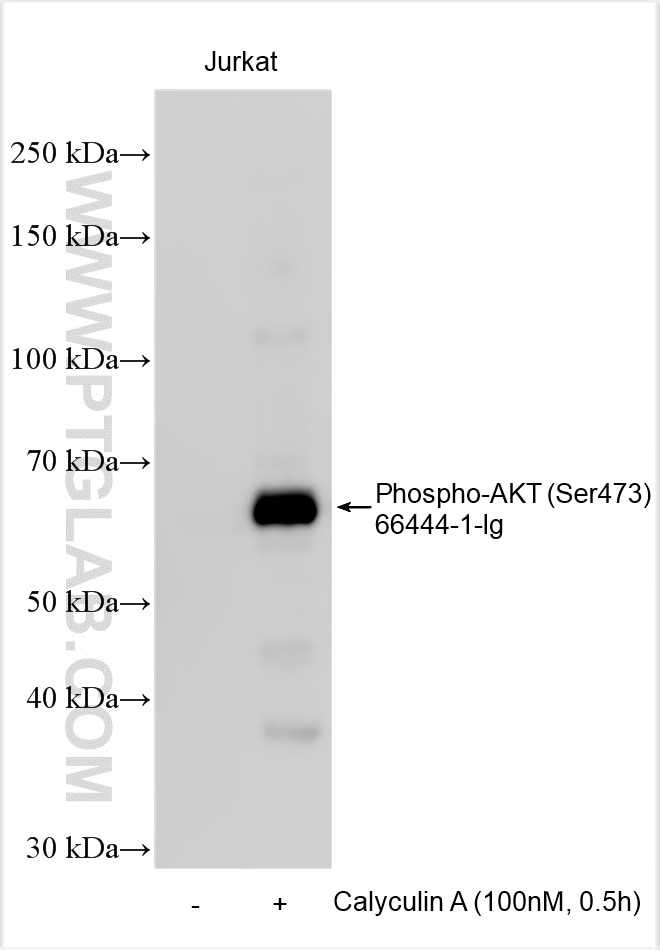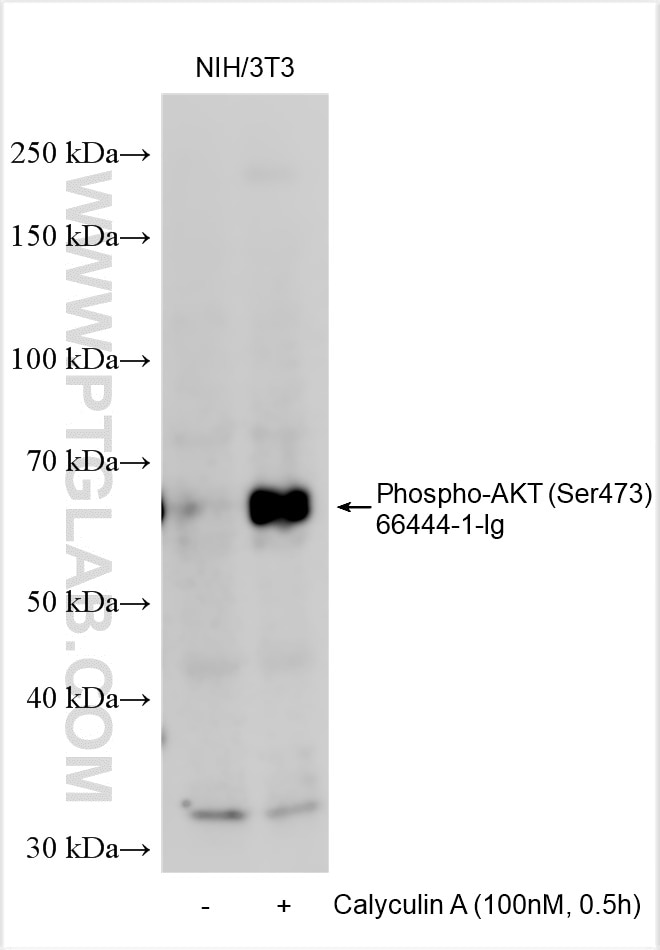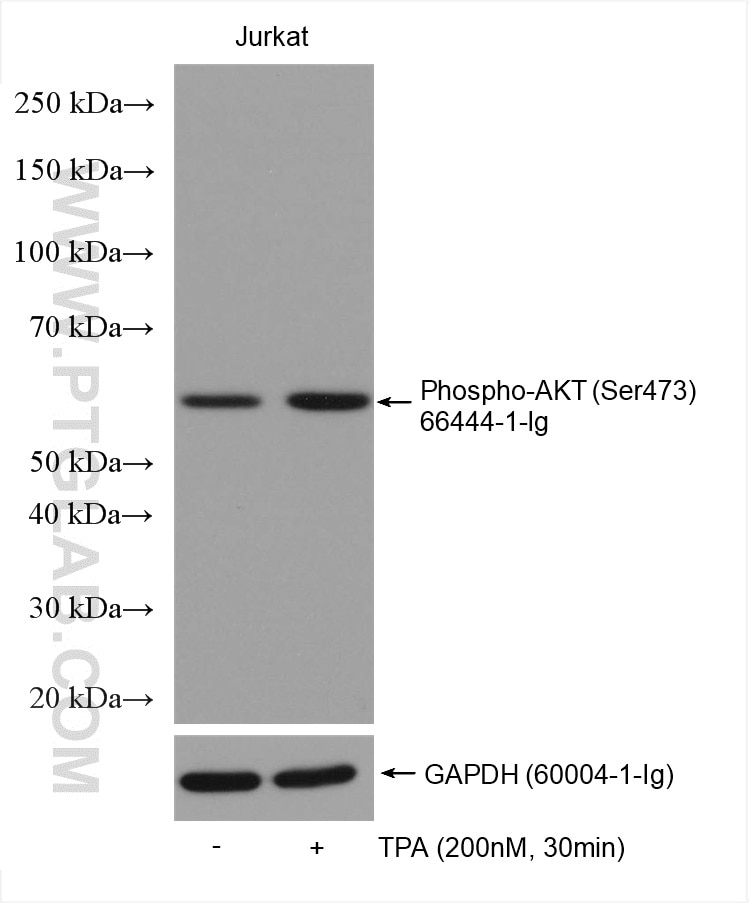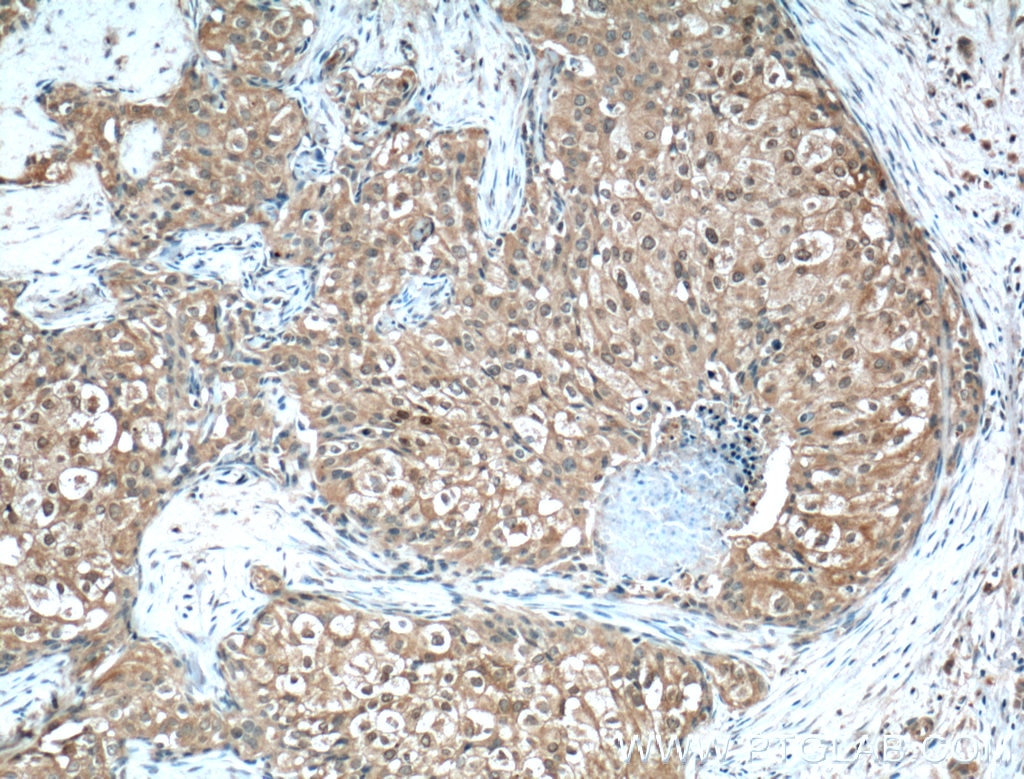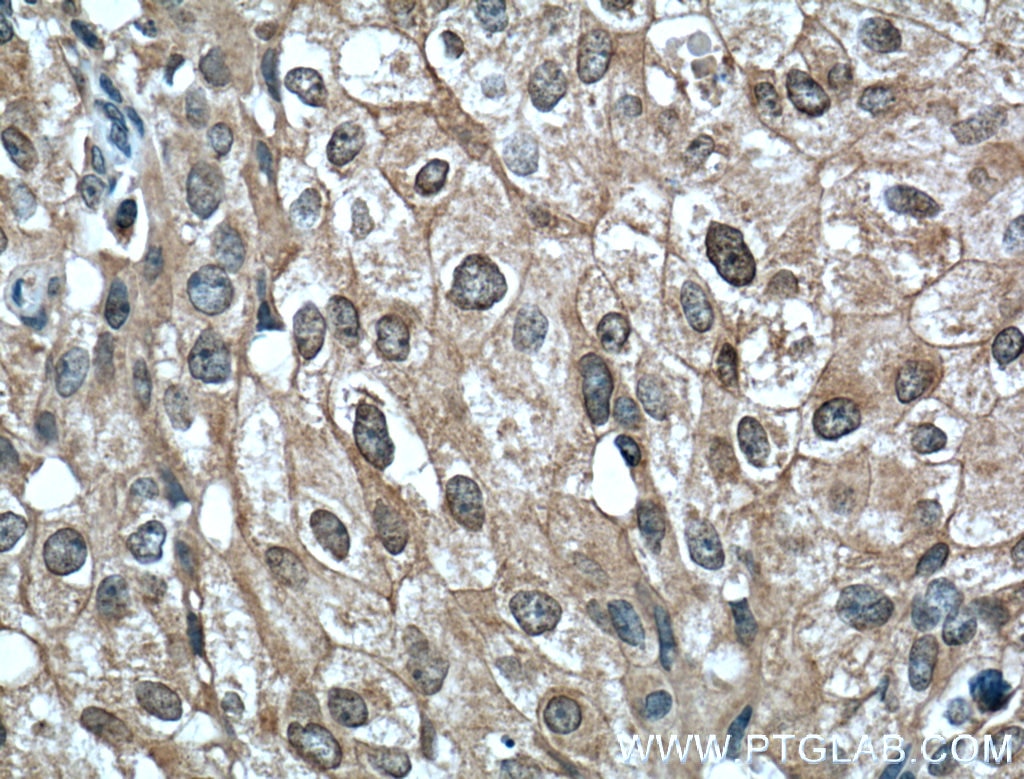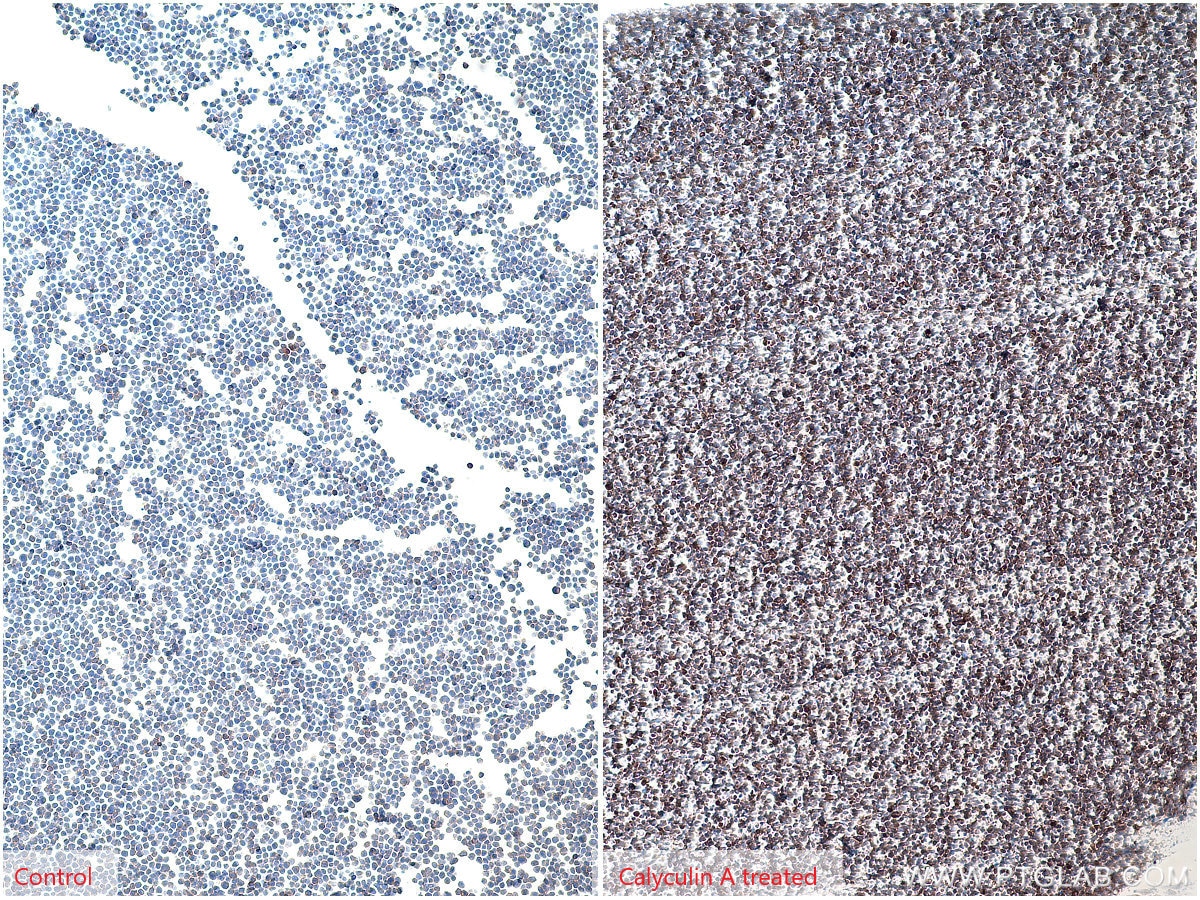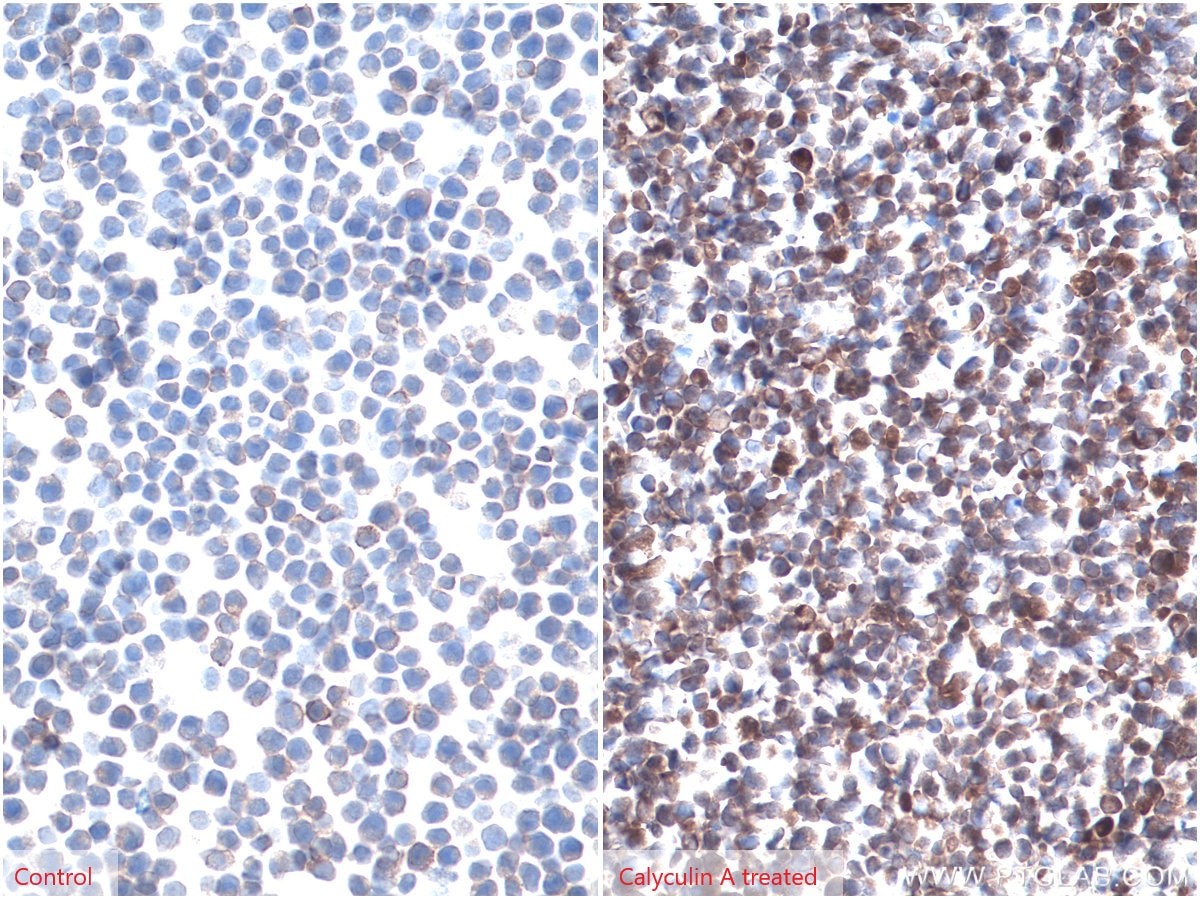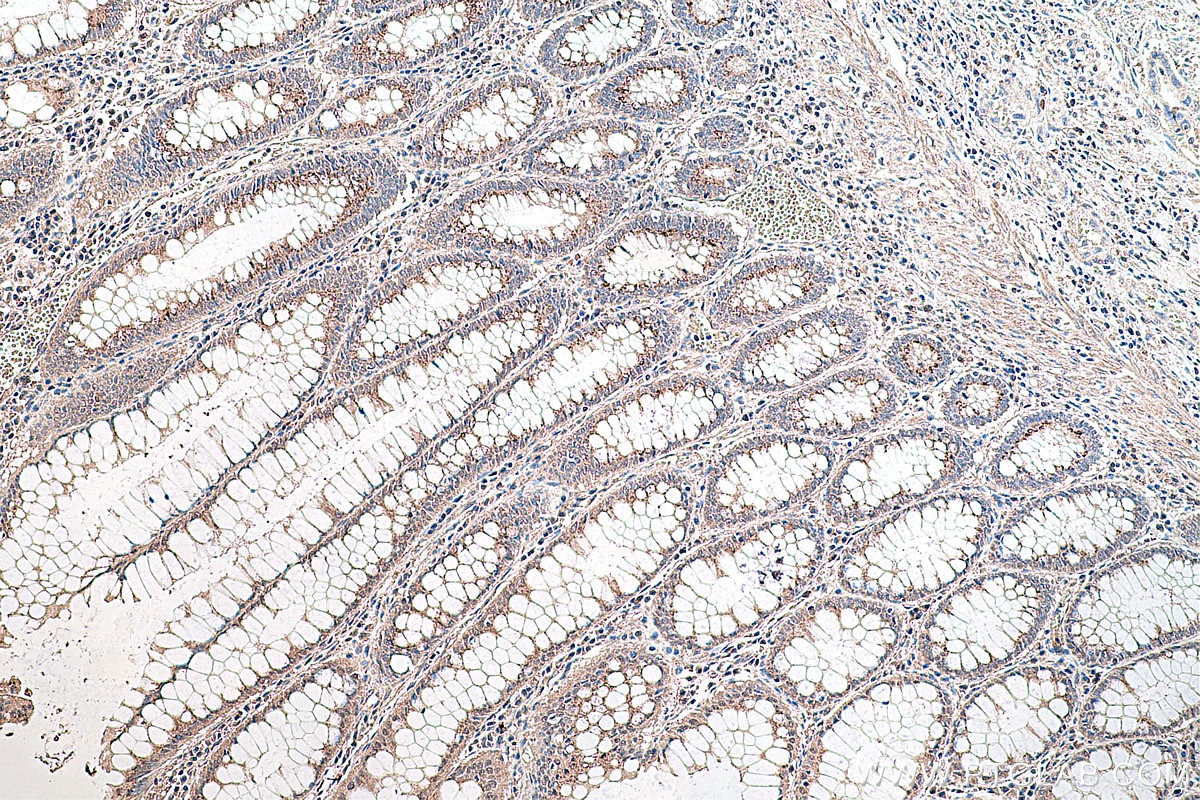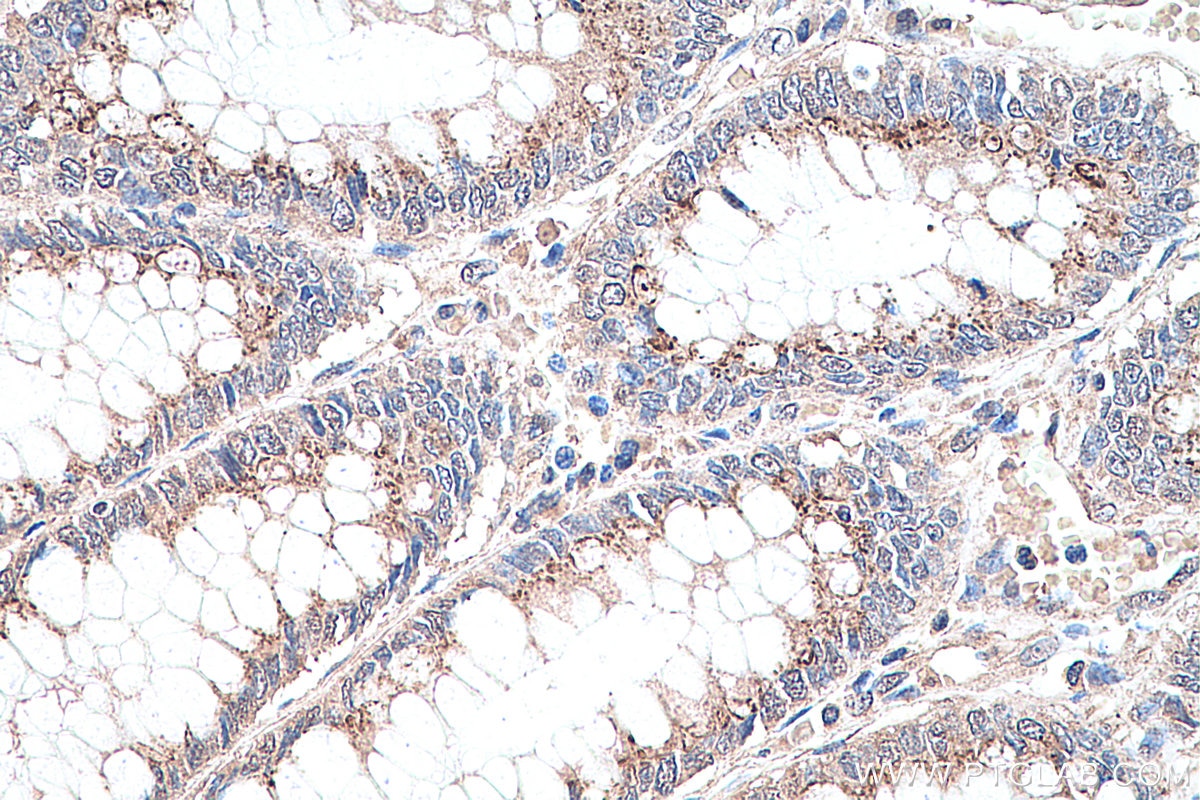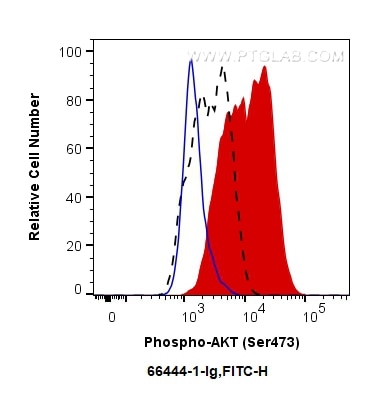Tested Applications
| Positive WB detected in | Calyculin A treated PC-3 cells, Calyculin A treated NIH/3T3 cells, Calyculin A treated HEK-293T cells, HSC-T6 cells, TPA treated Jurkat cells, Calyculin A treated HSC-T6 cells |
| Positive IHC detected in | human breast cancer tissue, Calyculin A treated Jurkat cells, human colon cancer tissue Note: suggested antigen retrieval with TE buffer pH 9.0; (*) Alternatively, antigen retrieval may be performed with citrate buffer pH 6.0 |
| Positive FC (Intra) detected in | Calyculin A treated PC-3 cells |
Recommended dilution
| Application | Dilution |
|---|---|
| Western Blot (WB) | WB : 1:2000-1:10000 |
| Immunohistochemistry (IHC) | IHC : 1:100-1:400 |
| Flow Cytometry (FC) (INTRA) | FC (INTRA) : 0.50 ug per 10^6 cells in a 100 µl suspension |
| It is recommended that this reagent should be titrated in each testing system to obtain optimal results. | |
| Sample-dependent, Check data in validation data gallery. | |
Published Applications
| KD/KO | See 1 publications below |
| WB | See 1214 publications below |
| IHC | See 89 publications below |
| IF | See 21 publications below |
| IP | See 1 publications below |
| FC | See 1 publications below |
Product Information
66444-1-Ig targets Phospho-AKT (Ser473) in WB, IHC, IF, FC (Intra), IP, ELISA, IHC-IF applications and shows reactivity with human, mouse, rat samples.
| Tested Reactivity | human, mouse, rat |
| Cited Reactivity | human, mouse, rat, pig, rabbit, monkey, chicken, zebrafish, sheep, duck |
| Host / Isotype | Mouse / IgG1 |
| Class | Monoclonal |
| Type | Antibody |
| Immunogen | Peptide Predict reactive species |
| Full Name | v-akt murine thymoma viral oncogene homolog 1 |
| Observed Molecular Weight | 60-62 kDa |
| GenBank Accession Number | NM_005163 |
| Gene Symbol | AKT1 |
| Gene ID (NCBI) | 207 |
| RRID | AB_2782958 |
| Conjugate | Unconjugated |
| Form | Liquid |
| Purification Method | Protein A purification |
| UNIPROT ID | P31749 |
| Storage Buffer | PBS with 0.02% sodium azide and 50% glycerol, pH 7.3. |
| Storage Conditions | Store at -20°C. Stable for one year after shipment. Aliquoting is unnecessary for -20oC storage. 20ul sizes contain 0.1% BSA. |
Background Information
1) What is AKT?
The serine/threonine kinase B AKT pathway (also known as the PI3K-Akt pathway) plays a vital role in the regulation of cellular processes, including cell proliferation, survival, and growth - processes that are essential for oncogenesis. Mutation of the regulator proteins PI3K and PTEN causes uncontrolled disruption within the PI3-kinase pathway, leading to the development of human cancers (1,2; see also AKT pathway poster for more details).
2) phospho-AKT and FAQs
A) What is the best way to normalize phosphorylated proteins analyzed by western blot?
Normalize phospho-AKT and total AKT with your loading control (e.g. Actin, tubulin), then calculate the phospho/total ratio using these normalized values.
Put more simply:
1. Calculate the ratio of band intensities of a phospho-AKT band: the loading control.
2. Calculate the ratio of band intensities of total AKT: loading control.
3. Divide ratio obtained #1 by #2 to obtain a normalized value for comparison among different conditions. This procedure allows one to distinguish between a change in AKT expression and a change in the ratio of phospho-AKT.
* If you are looking at the differences in a phospho-AKT expression resulting from an experimental condition (e.g., knockdown), you should also show the expression of total AKT to distinguish between a change in AKT expression (transcription/translation level) and a change in the AKT phosphorylation status.
B) What is the observed molecular weight for AKT and phospho-AKT?
Molecular Weight AKT - 56 kDa
Molecular Weight phospho-AKT - 60 kDa (Figure 1)

Figure 1. WB: HEK-293 cell lysate was subjected to SDS PAGE followed by western blot with 60203-2-Ig (AKT antibody) and 66444-1-Ig (AKT-phospho-S473 antibody) at a dilution of 1:4000 incubated at room temperature for 1.5 hours.
C) Are there any special WB conditions to optimize staining of a phospho-AKT?
Since this is a phosphorylated protein, 5% BSA is recommended over non-fat milk as a blocking agent.
D) What are good positive and negative controls for a phospho-AKT?
- Positive Control: HEK293 cells
- Negative Control: Treatment with PI3K inhibitors (e.g. wortmannin)
E) What species does this antibody react with?
Our internal testing has confirmed that it reacts with the human and mouse forms of phospho-AKT.Reactivity with the human form is also supported by the literature's citations of this antibody.
References:
1. Perturbations of the AKT signaling pathway in human cancer.
2. Targeting the PI3K-Akt pathway in human cancer: rationale and promise.
Protocols
| Product Specific Protocols | |
|---|---|
| WB protocol for Phospho-AKT (Ser473) antibody 66444-1-Ig | Download protocol |
| IHC protocol for Phospho-AKT (Ser473) antibody 66444-1-Ig | Download protocol |
| Standard Protocols | |
|---|---|
| Click here to view our Standard Protocols |
Publications
| Species | Application | Title |
|---|---|---|
Signal Transduct Target Ther Circulating tumor cells shielded with extracellular vesicle-derived CD45 evade T cell attack to enable metastasis | ||
Adv Mater Targeted Macrophage CRISPR-Cas13 Mrna Editing in Immunotherapy for Tendon Injury | ||
Cell Metab Disrupted methionine cycle triggers muscle atrophy in cancer cachexia through epigenetic regulation of REDD1 | ||
Cell Res Inhibiting Hv1 channel in peripheral sensory neurons attenuates chronic inflammatory pain and opioid side effects. | ||
Nat Commun Genome-wide enhancer-gene regulatory maps link causal variants to target genes underlying human cancer risk |
Reviews
The reviews below have been submitted by verified Proteintech customers who received an incentive for providing their feedback.
FH Ana (Verified Customer) (06-17-2025) | The staining looks very good. It might be better to dilute a bit more than 1:2000 to reduce background noise.
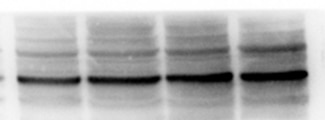 |
FH András (Verified Customer) (07-31-2023) | The Mk-2206 is an allosteric Akt inhibitor that prevents its recruitment to the membrane and consequently its phosphorylation. The Capivasertib is an Akt competitive inhibitor which induces its over phosphorylation.
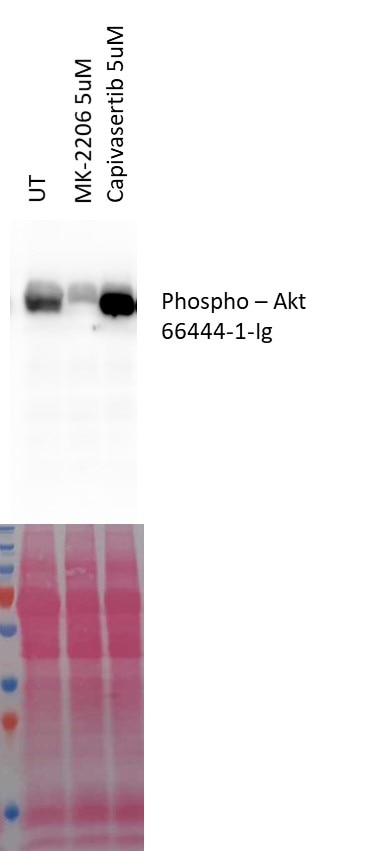 |
FH Jorge (Verified Customer) (07-26-2022) | Good signal. Unspecific band below 100 kDa. Used PageRuler Plus Prestained Protein Ladder and chemiluminescence was detected in the 70 kDa marker.
|
FH Tom (Verified Customer) (12-15-2020) | 10ug total protein of HEK293T lysate loaded. Membrane blocked in 5% BSA. Antibody (1:1,000) incubated overnight in block at 4 degrees. Anti-mouse HRP used at 1 in 10,000 to detect band.
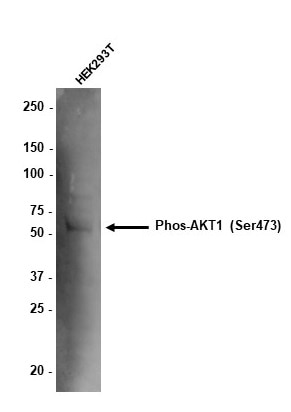 |
